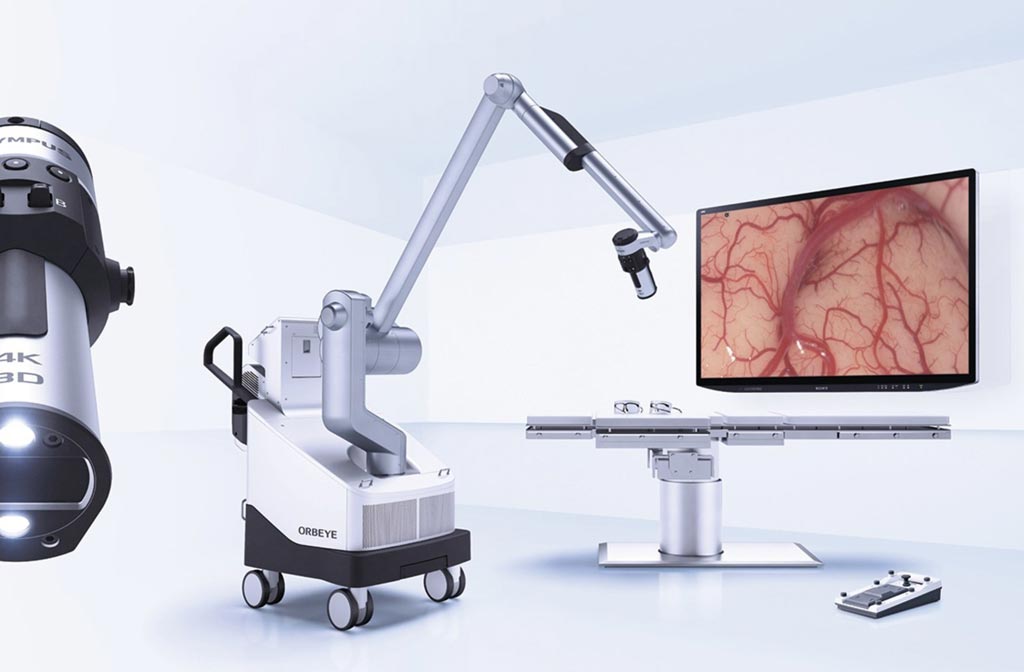Orbital Microscope Promotes Ergonomic Surgery
By MedImaging International staff writers
Posted on 19 Oct 2017
A precision exoscope can enable more accurate surgery by providing high-resolution three-dimensional (3D) imaging of the structure of tissue, blood vessels, and other features.Posted on 19 Oct 2017
The Olympus (Tokyo, Japan) ORBEYE microscope uses two Sony (Tokyo, Japan) 4K ExmorR complementary metal-oxide semiconductor (CMOS) sensors to deliver high-sensitivity, low-noise 3D digital images that support precision surgery. An image processing circuit designed to work across a wide color range with four times the pixel count of the High Definition (HD) standard minimizes the delay associated with the large amounts of data, providing zero image latency for smoother viewing and manipulation of the target location.

Image: The ORBEYE 4K-3D video microscope system (Photo courtesy of Olympus).
The microscope, which has no eyepiece, uses a 55-inch 4K 3D monitor to help reduce surgeon fatigue and facilitate team surgery by allowing a more comfortable working posture that does not require that the surgical team spend long periods of time peering into a microscope lens eyepiece. Moreover, as the large monitor enables the entire surgical team to view the same image, it allows more than one surgeon to operate and improves efficiency by allowing information to be shared with other surgical staff.
In addition, the use of digital technology has made the microscope unit much smaller, helping to free up surgical space in the operating room. The reduced size also allows faster setup times by eliminating the need to make awkward adjustments to the balance of the arm, and also by allowing a smaller, easier-to-fit surgical drape to be used to keep the microscope clean. The ORBEYE microscope was developed by Sony Olympus Medical Solutions (Tokyo, Japan), a joint venture between Olympus and the Sony founded in 2013.
“We have already received resounding enthusiasm for our 4K and 3D technology for laparoscopy and endoscopy. We are pleased that through the development of ORBEYE, this 4K-3D technology can be offered to more specialties such as neurosurgery, spine, microsurgery, ENT, and cardiac,” said Randy Clark, group vice president of the surgical division at Olympus America. “We understood that with such complex and lengthy surgeries, the technology would have to be innovative and groundbreaking enough to entice surgeons to make a change.”
“The ORBEYE exoscope represents the next generation of operative imaging, a true quantum shift,” said David Langer, MD, of Lenox Hill Hospital (New York, NY, USA). “Its adoption is certain and will impact the use of loupe magnification as well as the current operating microscope. The ease of use, surgeon ergonomics, and effects upon the operating team are revolutionary, and I look forward to continuing to train and develop new strategies for its adoption.”








 Guided Devices.jpg)





